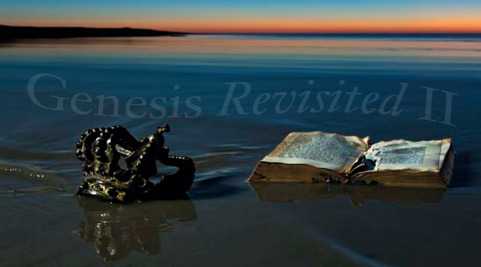- Article
- Read in 33 minutes
Steve Hackett – Genesis Revisited II – 2CD review
Steve Hackett releases a follow-up to his 1996/1997 Genesis Revisited album. Again, he invited various musicians from different genres to deliver contributions. Find all information here.
“I would like to repaint the Mona Lisa“… No, that is not Steve Hackett about Genesis Revisited II, it is what Phil Collins said in 2010 when he had created a work of art with Going Back. 29 Motown classics were carefully recorded afresh – but the goal was to make them sound like they did when Motown ruled the charts. Collins had not set out to do new interpretations, he wanted to revive the era. Earlier that same year, his former band-mate Peter Gabriel had done exactly the opposite. In Scratch My Back, he challenged himself by moving as far away from the originals as possible in his „no drums, no guitars, only orchestra“ concept. Steve Hackett took the middle ground in 1996 when he brought out Genesis Revisited. Some things sounded familiar, others had been done over in a thoroughly idiosyncratic way. And unlike Phil Collins and Peter Gabriel Hackett dared to look back at that sacred cow, the early years of Genesis. To Genesis fans that is something very different from paying respect to a style of music or trying out an alternative concept. Hackett took some criticism for it. Some said he had strayed too far from the originals, other fans felt he had castrated the best parts of the song, e.g. Firth Of Fifth, where he all but dropped the Banks solo. It was these songs, however, that made Genesis Revisited controversial and therefore interesting.
More than 15 years later here he comes with a second part. He tries his hand at many more songs than on the first volume. He also offers some of his own songs, but only those that were, in his words, influenced or inspired by Genesis. For this recording he has brought in an illustrious list of musicians, and he himself sings very few songs.
Steve Hackett has this to say about the album:
“I sympathise with Hitchcock’s need to re-make an earlier film. The vision is clearer, techniques improve inwardly and outwardly. For all us musicians songs of innocence are now inevitably songs of experience. I love the original Genesis music so much that I want to highlight it even more. The temptation to infuse those tracks with more detail and enriched clarity was irresistible.Musos set the ball rolling by passing it to one another as a means to carry forward combined ideas. The songwriters then necessarily move on to the next project, but the avid listener knows it’s really a chariot of fire, a bow of burning gold or a dark satanic mill… It’s emblazoned into the mind with a life of its own that moves way beyond the dreams of the original perpetrators. But sometimes dreams need to be re-lived!On these versions I’ve altered the detail within the songs whilst aiming to preserve the authentic spirit of the originals. Real string instruments are often used either with or instead of Mellotron, there are several new introductions, plus many additional effects recorded on Apple Mac Logic with amp plug-ins instead of going the traditional route. You’ll also find changed guitar and other instrumental solos, as well as additional vocal parts.
Every time I change a solo I feel I’m in danger of messing with people’s childhoods, but sometimes the muse just has to have her way with me…”
We offer you a track-by-track analysis based on the opinions of three reviewers: Helmut Janisch (HJ), Steffen Gerlach (SG) and Peter Maiwald (PM):
Tracklisting Disc 1:
The Chamber of 32 Doors (6:00)
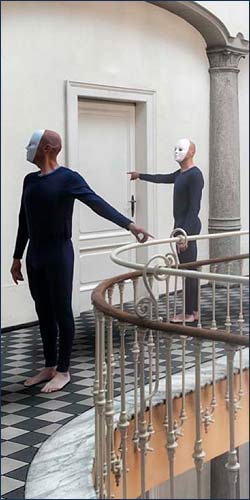
Nad Sylvan: Vocals
Steve Hackett: Guitars
Dick Driver: Double bass
Roger King: Keyboards
Gary O’Toole: Drums
Christine Townsend: Violin, Viola
Rachel Ford: Cello
John Hackett: Flute
Benedict Fenner: Additional Production
Steve Hackett about The Chamber Of 32 Doors:
. I’ve always liked this song harmonically. It’s an Anglo-American hybrid with unexpected gusts of passion. I wanted to re-play the original guitar parts with more control and sustain. Having tracked up string and flute players, this new version started to take on symphonic proportions. In contrast, the new subtle distant wailing guitars add to the song’s unnerving quality. Nad Sylvan’s expressive soulful range also reinvigorates the song for me, while sympathetically echoing Gabriel’s vocal performance.”
HJ: A brief intro on the acoustic guitar replaces the familiar transition from Carpet Crawlers to Chamber. Instrumentation and interpretation follow the original closely. The singer’s voice sounds a bit croaking to me and therefore slightly annoying. It also sounds as if the singer had a strong dialect or was not English at all. Fine version, but the vocals …
SG: A new brief intro on classical guitar makes the listener curious what Hackett has done with this fairly unexpected choice from the Genesis back catalogue. The intro remains the only new bit, musically. The song is performed by Hackett’s current band line-up; Swedish singer Nad Sylvan (ex-Unifaun, Agents Of Mercy) tries his hand, or rather, his voice at Gabriel’s original vocals. The voice comes close to the original, but with an audible lump in his throat.
PM: It does not take a Peter Gabriel and no Phil Collins either to make this song sound great. The first sounds from this album give you an appetite for more – for much more… Close your eyes and enjoy.
Horizons (1:41)
Steve Hackett: GuitarsBenedict Fenner: Additional Production
Steve HackettaboutHorizons: “A small starter on the menu before Supper’s Ready, recorded with a six string steel acoustic sent out through a Leslie to give it that authentic early Genesis sound. Influenced more by Bach and Byrd than Blues, this kicked off many acoustic ideas that were to follow. “
HJ: A simple straightforward version similar to the one on Foxtrot.SG: Another recording of Hackett’s acoustic classic. There are already a couple of them out there. Perhaps a little broadening of the sound spectrum would have been advisable.
PM: Again and again and again … This is the low of the album for me. The song has been recorded far too often by Steve – and sounds banal … Alas.
Supper’s Ready (23:35)
Mikael Akerfeldt: Vocals (i + iv)
Simon Collins: Vocals (ii + vi)
Conrad Keely: Vocals (iii)
Steve Hackett: Guitars, Vocals (v)
Francis Dunnery: Vocals (vii)
Lee Pomeroy: BassRoger King: Keyboards
Jeremy Stacy: DrumsDave Kerzner: additional Keyboards & programming
Benedict Fenner: Additional Production
Steve Hackettabout Supper’s Ready:
. This one is often referred to by fans as their favourite progressive track of all time… This version includes several vocalists to add to the varying texture of all the elements. It begins with a soulfulness in Mikael Akerfeldt’s presentation, followed by a sweetness in Simon Collin’s voice and the exuberance of Conrad Keeley. I aimed to pull off the English pastiche aspect of Willow Farm with its array of characters in a kind of Teddy bears Picnic meets I am the Walrus. The whole thing finally opens up into its epic ending with the warm and expansive vocal of Francis Dunnery. I played extra guitar parts which aren’t on the original in both the organ section and on the end to give it more colour.”
HJ:i. Lovers’ Leap
Musically, it is close to the original, and the singer, while no revelation, is okay. Ray Wilson sang it better in 1998.
ii. Guaranteed …
Simon Collins cannot hide his ancestry … but he cannot outdo his father. This sounds a lot like Phil in places – a good choice for a singer here.
iii. Iknaton …
Well-done, but the singer is nothing special; he is obviously highly motivated to sing his part but does not find the right mood.
iv. How dare …
Here they have dared to experiment with the vocals and add lots of echo. A good combination of voice and effect for this part.
v. Willow …
Oh – Steve on the microphone! From „a flower?“ onwards he sings himself. He does so in a very original way and thus retains the weirdness and humour of Peter Gabriel when he used to prance across the stage in his flower mask. Steve is the ideal singer for Willow Farm on this album.
vi. Apocalypse …
Good version with beautiful flute parts by John Hackett. Simon’s vocals are good, but could do with more aggression. The instrumental part is close to the original without creating that much of a threatening mood.
vii. As Sure …
The singer sounds more emotional, but still a bit too „weak“. Steve’s guitar work overpowers the part and introduces too many improvisations.
SG: A cover version of Supper’s Ready? What a challenge! Hackett plays it safe and sticks to the original. Jeremy Stacey on drums (cf. Squackett) and Lee Pomeroy (It Bites and the current Hackett live band) can be heard for the first time. Vocal duties are fulfilled by five singers which give the piece a certain musical touch. Mikael Akerfeldt (Opeth) sings Lover’s Leap in an unremarkable manner. He is followed by Phil Collins’ son Simon on …Sanctuary Man, in a version that sounds rather like his old man’s. Conrad Keely (A.Y.W.K.U.B. The Trail Of Dead) forcefully tackles Ikhnaton And Itsacon…, and so does Akerfeldt with How Dare…„A flower“ is Steve Hackett’s cue. He sings Willow Farm courageously and with lots of self-confidence. Collins takes over for Apocalypse In 9/8 which has some ethereal guitar sounds added by Hackett. He also plays a brief solo on the Hammond. Singer/guitarist Dunnery, formerly of It Bites, sings the final part As Sure As Eggs Is Eggs, and does a good job. As the music fades out Hackett adds some solo parts as one of few variations. Squackett drummer Jeremy Stacey sticks to Collins’ studio version. Dave Kerzner, keyboard plug-in specialist and helping hand in the preparations of Genesis’ 2007 tour, provides the usual suspects as well as a couple of keyboard sounds that could have been in the original. Nothing new there.
PM: Now for the big one … I was appalled to hear such a weak and listless voice at the very beginning of the song. You get used to it, though why does he crack the notes in the „I feel so far from here…“ bit?!? That’s close to schmaltzy! It is also the only thing I would criticise in the song. Instrumentally, this was and is a really great song – and the addition of several acoustic instruments even improves it… like the original. Note the wonderful drum sessions by Jeremy Stacy…
The Lamia (7:47)
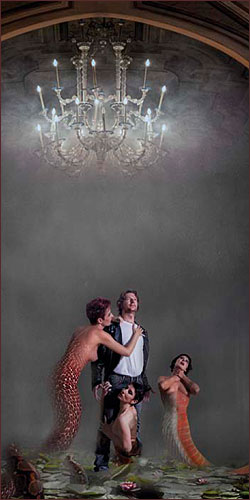
Nik Kershaw: Vocals
Steve Rothery: Guitars
Steve Hackett: Guitars
Lee Pomeroy: BassRoger King: Keyboards
Gary O’Toole: Drums
John Hackett: Flute
Benedict Fenner: Additional Production
Steve HackettaboutThe Lamia: “To my mind this is the most poetic song on The Lamb… It expresses Pre Raphaelite magic amidst the urban sprawl of Rael’s tale. It’s a song that speaks to women as much as men. Nik Kershaw sings this one with great passion. His take is hymn-like, emotional and erotic at the same time. Steve Rothery of Marillion and I swap guitar phrases that wrap around each other in a snake-like way, reflecting the lyric.”
HJ: Nik Kershaw’s voice and style fit The Lamia perfectly. It brings on a grand wistfulness. The instrumentation, especially John’s flute part, is beautiful. I find the guitar bits at the end of the instrumental closing section distracting, a superfluous improvisation that reminds me of Daryl Stuermer’s awful Firth Of Fifth solo. Pity Steve did not stay closer to the original.SG: Did he pick Nik Kershaw as a nod to Tony Banks like he picked Paul Carrack for the Rutherford song Your Own Special Way? Either way the fragile, emotional vocals fit the original style of the song well. Only the guitar solo is extended and changed into a duet with Marillion guitarist Steve Rothery that is not bad but does not really add anything new.
PM: Nik Kershaw … wow … sensitive and wonderful … John Hackett’s flute is magic!! And Steve with Steve Rothery… we hear that duet only too rarely … this is my highlight on the album!
Dancing With The Moonlit Knight (8:10)
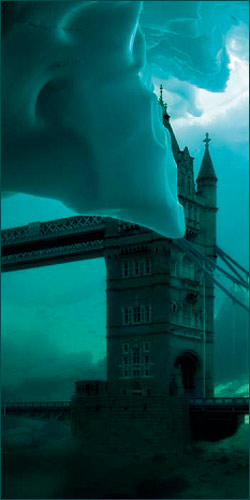
Francis Dunnery: Vocals
Steve Hackett: Guitars
Lee Pomeroy: Bass
Roger King: Keyboards
Jeremy Stacey: Drums
John Hackett: Flute
Rob Townsend: Soprano Sax, Whistle
Steve Hackettabout Dancing With The Moonlit Knight:
. This is possibly my favourite Genesis song, with influences ranging from Scottish plainsong to fusion… Elgar meets Brave new World. It epitomises the character and magic of early Genesis. It features tapping, nylon and twelve strings. Jeremy Stacey’s drums give this version even more precision. The “Disney” section at the end has an English pastoral hypnotic feel – a thread to the world of Spencer’s Fairy Queen – a small corner of England remaining while the rest is sold off as a job lot plunging headlong into an alienated future. In this version I started this piece with the beginning of Greensleeves to give a sense of the old English thread and the poignancy of the song, which Francis Dunnery’s sensitive vocal also expresses.”
HJ: Steve plays a brief intro on the acoustic guitar that incorporates the tune of Greensleeves before the familiar „Can you tell me…?“. It fits. Whether it is necessary is up to the individual. The singer is alright, but he sounds a bit nasal and his singing style is a bit too rough for me. The version is close to the original and, luckily, free from guitar improvisations as in The Lamia. Beautiful: the closing part a la Selling… with quiet guitar and flute sounds that also provide the transition to the next song.SG: A short new intro on the acoustic guitar complements the unchanged cover version of this long track. Francis Dunnery’s strong voice fits it well. Hackett’s guitar is a tad more aggressive than we are used to. The only new colour is Rob Townshend’s soprano sax.
PM: Sounds like a version with Peter Gabriel when he has a cold. Still, it’s fine, but no more than that.
Fly On A Windshield(2:54)
Gary O’Toole: Vocals, DrumsSteve Hackett: Guitars
Roger King: Keyboards
Lee Pomeroy: Bass
Steve Hackettabout Fly On A Windshield:
. Influences in this powerful piece range from Ravel to Hendrix, with the ramming speed of Ben Hur along with echoes of the Egyptian pyramids, all brought to life under the watchful towers of New York. A wall of sound meets the wall of death. In this new version the guitar sometimes screams like slaves under the whip.”
HJ: Steve has played this song (and the following) live in recent years, and so neither the interpretation (close to the original) nor the vocals of Gary O’Toole (mainly drummer in the Hackett band) come as a surprise. Perhaps that is also the reason why his voice does not sound as strange in the song as other singer’s voices frequently do in this album. It may not be high art, but Gary is authentic, emotional and strong – and I like it very much. The bass (pedal?) parts are very fine. The guitar improvisations strewn across the song are perhaps a bit much.SG: See my remarks on Broadway Melody of 1974
PM: Gary O’Toole’s vocals do not fit this hammer of a song at all … The arrangement is a bit too brutal for my liking.
Broadway Melody of 1974(2:23)
Gary O’Toole: Vocals, DrumsSteve Hackett: Guitars
Lee Pomeroy: Bass
Roger King: Keyboards
Steve Hackettabout Broadway Melody of 1974:
. Gary sings this with more blues inflection than the original. His vocal turns police radio commentary surveying an imaginary parade as the whole of the American dream turns nightmare. Consumerism runs riot whilst cheerleaders and the Clan join the procession.”
HJ: Gary’s vocal become even stronger. His voice is distorted by some effect during the „Ku Klux Klan“ passage, which sounds very interesting. All in all an accomplished version and a fine series of two or, if you include Moonlit Knight, three songs.SG: Known from Hackett’s live set, here it is recorded in the studio. Drummer Gary O’Toole sings, and Hackett permits himself variations in the Windshield solo. A couple of new vocal effects in the Broadway Melody. Does no harm.
PM: The hammering continues…. The keyboard blanket is too far in the background for me… and I could have done very well without the repeating echo… One of the disappointments on the album.
The Musical Box (10:57)
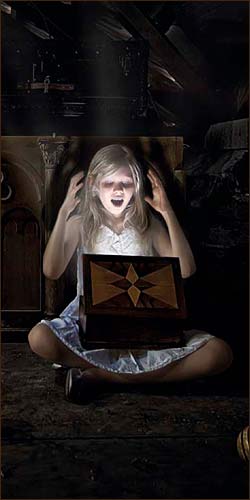
Nad Sylvan: Vocals
Steve Hackett: Guitars
Lee Pomeroy: Bass
Roger King: Keyboards
Gary O’Toole: Drums
Rob Townsend: Soprano Sax
Steve Hackettabout The Musical Box:
. To introduce this new version I used a musical box sound that distorts into another kind of nightmarish feel. On this track was the earliest recording of the tapping solo. The three part harmony guitar on the end now is everything I always dreamed of doing on the original. Also check out Nad Sylvan’s cameo choirs and the Fiddlers three who have become soprano sax and violin along with slightly distorted flute…”
HJ: As with Chamber or Moonlit Knight we do not get the beginning we are used to. Steve kicks off the song with a peculiar intro made up of musical box sounds – an original, good start! When the vocals come in, however, the euphoria fades, for it is Nad Sylvan, whose voice I did not enjoy on Chamber either, who sings this song. The interpretation is close to the original, but it sounds much more modern. The instrumentals are particularly good and prove that one need not play around. The drums, however, sound a bit flat. The vocals become annoying from „She’s a lady“ onwards and are hardly bearable during „Touch me now“. Well, a very nice version of a Genesis classic, but unfortunately with the wrong singer.SG: The song begins, surprisingly, with the sound of real musical boxes as an intro to the usual guitar entry. Nad Sylvan sings again. The backing vocals play a more important role here and particularly so in the closing section. The drums sound stronger than in the original, and there are even a couple of low notes by Lee Pomeroy in this originally bass-free song.
PM: A fantastic opener for this song. This is what I love about Steve Hackett… Unfortunately I have heard the original so often that I cannot let Nad Sylvan grip me like I would like him to… But 1:50 into the song there is that special tingling down my spine…“Why don’t you touch me?“ Come on , do it, not so flat, but really! Please!
Can-Utility And The Coastliners (5:50)
Steven Wilson: VocalsSteve Hackett: Guitars
Nick Beggs: Bass
Roger King: Keyboards
Gary O’Toole: Drums
Christine Townsend: Violin
Rob Townsend: Whistle
Steve HackettaboutCan-Utility And The Coastliners: “The lyrics and music were essentially mine on this song about King Canute. This was Steven Wilson’s favourite track on Foxtrot and he’s sung it beautifully, with real feeling. Real orchestral instruments on this track enrich the sound.”
HJ: Another fine interpretation – close, perhaps too close to the original. I am in two minds whether I like the vocals. It is difficult to accept in a song that stays close to the original a singer who does not sound like Peter or Phil and does not have a lot of expression or charisma. There is a peculiar vocal choir in „nothing can my peace destroy“ and assorted peculiar musical ideas in the end of Can-Utility.SG: Jack-of-all-trades Steve Wilson (Porcupine Tree) gets to show off his talent in this forgotten treasure. He does a good job in which he sticks to the ’72 version. The strings do not come from the mellotron but are played by Christine Townsend.
PM: All I am saying is: Steve Wilson in a perfectly mixed arrangement of instruments. Those bass pedals!
Please Don’t Touch (4:03)
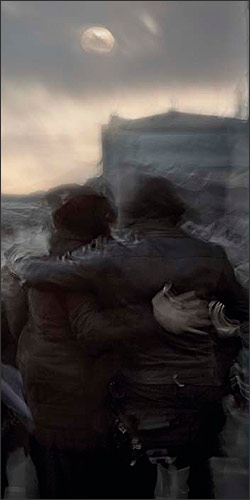
Steve Hackett: Guitars
Dick Driver: Double Bass
Roger King: Keyboards
Gary O’Toole: Drums
John Hackett: Flute
Steve HackettaboutPlease Don’t Touch: “Another Genesis branch rehearsed by the band, originally linked to Wot Gorilla on Wind and Wuthering. It’s a variation on my Unquiet Slumbers melody and I feel more strongly thematic than Wot Gorilla. An orchestra again plays on this version, in places making it huge and uncompromising… something I couldn’t get in the same way without the orchestral instruments on the original. This time I also enjoyed really letting the guitar sustain and let rip… “
HJ: An interesting version of the classic song, a legitimate rejuvenation that retains all the original ingredients in a modernised sound. Steve has chosen an outro similar to one he used to do live where, instead of switching abruptly to Necam (the computer), the song ends with flute, guitar and piano.SG: Close to his original, yet it sounds refreshed, bouncy and not like plastic the way the GTR version did in the 80er, even though that arrangement may have been a bit more creative.
PM: It is an acquired taste… and I like it… this version, too! John Hackett rules on flute!
– Total playing time: 73:20
Tracklisting Disc 2:
Blood On The Rooftops(6:56)
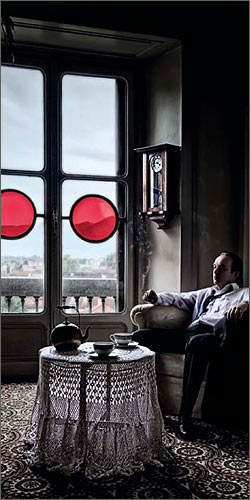
Gary O’Toole: Vocals, Drums
Steve Hackett: Guitars
Dick Driver: Double Bass
Phil Mulford: Bass
Roger King: Keyboards
Rachel Ford: Cello
Christine Townsend: Violin
Rob Townsend: Soprano Sax
Steve Hackett about Blood On The Rooftops:
. At the beginning is a totally new part for the nylon intro which then links to the original intro. Again, there’s also now the addition of orchestral instruments which create an enriched sound. A great vocal from Gary O’Toole who really lives the song I wrote with Phil long long ago…”
HJ: A longer intro on the acoustic guitar leads into the song, and everybody will have to decide for themselves whether this makes sense when the rest of the song is so close to the original. Hackett fans will know Rooftops from Steve’s recent tours. They are likely to regard Gary’s soulful singing as normal. Some saxophone adds to an arrangement that does not differ all that much from the original.SG:The song has been a staple in the live sets for several years; it is used to make the transition from the acoustic set to the band set. Steve seems to have carried over some improvised ideas from there into a one-minute „intro to the intro“ for the studio version. The band consists of the usual suspects (with Phil Mulford on Bass), plays as in the original, with the soprano sax tastefully picking up some keyboard solo sounds.
PM:A tad too much echo in the intro… but well, there certainly is a reason… The ideal song for Gary O’Toole… it fits so well! The saxophone is a bit daring. The transition to the first chorus is brilliant! Goose pimples!
The Return Of The Giant Hogweed (8:46)
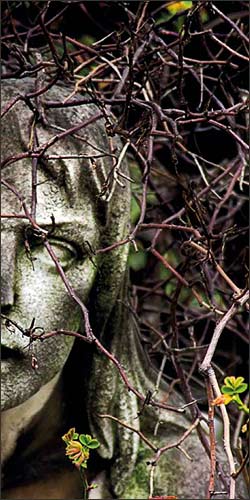
Neal Morse: Vocals
Steve Hackett: Guitars
Roine Stolt: Guitars
Lee Pomeroy: Bass
Roger King: Keyboards
Gary O’Toole: Drums
John Hackett: Flute
Benedict Fenner: Additional Production
Steve Hackett about The Return Of The Giant Hogweed:
. Roine Stolt leads the main guitar solo and we go off the map significantly together in the new version, with power chords and police siren noises coming in from me as the track reaches its crazy finale with disembodied Mellotron hurtling towards the end … With John Hackett on scat flute and Rob Townsend doubling the bass from Lee Pomeroy in places the whole effect makes the track now sound even more preposterously huge than ever!”
HJ: Like many songs on GR2 this song has been modernised and interpreted well and resembles the 1971 Genesis version. Neal Morse does okay as a singer, though he is not exciting. The guitar improvisation towards the end of the middle section (at around 5:50) sounds peculiar, and the guitars in general have been used in a very exaggerated manner (guitar war). Compared to that the vocals are more pleasant. The ending is perfect.SG: The guest musicians on this track have already covered it with their own band Transatlantic. So it was kind of an obvious idea for Steve, who has played the song with their as their guest, to ask Neal Morse (ex Spock’s Beard) and Roine Stolt (Flower Kings). Morse sings with a passion without adding anything new and Stolt lets rip as solo guitarist in a previously „unused“ instrumental part of the song. He also adds a bit of drama towards the end.
PM: The heroes meet for the battle… Stolt, Hackett, Morse … Sharpen thy swords and enter the melee! In the midst of it all O’Toole keeps it all together in a fantastic manner. The guitar solo is rather out of character and destroys the atmosphere…
Entangled (6:35)
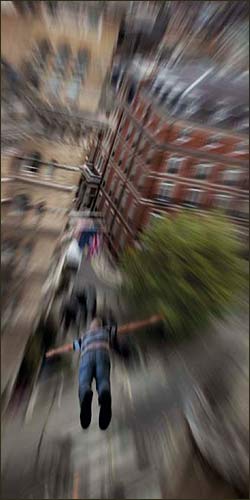
Jakko Jakszyk: Vocals
Steve Hackett: Guitars
Roger King: Keyboards
Amanda Lehmann: Harmony Vocals
Steve Hackett about Entangled:
. A song I wrote with Tony, inspired by the dream state. On this version Jakko Jakszyck’s beautiful vocal is joined by Amanda Lehmann’s harmonies in the chorus…”
HJ: One of the few songs where it all works out, where the musical level is high, there are no unnecessary experiments and the singer is good and fits! The instrumental is a shade less strong than on A Trick Of The Tail.SG: Compared to the original it is the lead and backing vocals (with some additional parts) that stick out more clearly. Luckily Jakki Jaksyk’s voice blends in well with the unchanged arrangement. Amanda Lehmann’s backing vocals complement the sound nicely.
PM: A beautifully constructed musical space… sprite-like fairy tale images seem to appear while you are listening. We are hovering in the 70s!
Eleventh Earl Of Mar (7:51)
Nad Sylvan: VocalsSteve Hackett: Guitars
Nick Beggs: Bass
Roger King: Keyboards
Gary O’Toole: Drums
Steve Hackettabout Eleventh Earl Of Mar:
. Again Nad Sylvan adds extra vocal parts here and I get to do the voice loops, an idea I had for Phil when the tapes were in danger of being chewed up. Doing many tape loops of vocals going ‘aaah’, my chest felt punctured from inside during the process! Guitar parts are clearer than before, plus a six stringed Rickenbacker, beloved of the Beatles, chimes in on the “features are burning” section.”
HJ:The intro sounds a bit peculiar, as if a woollen blanket were covering the speakers, and it lacks power. And then Nad Sylvan sings again, and I cannot get into his voice. What is it in his voice here, is it slang or insecurity about the lyrics? I do not know but I hear things like „The sun had been up for a couple of EYES“ (instead of „hours“). Other similar instances occur less obviously, e.g. „in the direction of Pey“ (instead of „Perth“). After „once again you stand along“ Nad croons a superfluous „oh-ho-ho“ – argh! The instrumental does not convey the mood of the original. The only highlight is the very fine finale that, however, cannot salvage the song.SG:Nad Sylvan gets to sing again. His voice sounds more like Gabriel, but he can pull off a Collins, too. There are hardly any new ideas for an arrangement. The most obvios changes are some additional voices in the quiet middle part and the final verse. The interesting RotoTom breaks from the original version have been left out, though.
PM: One of the songs that always makes me think of Phil’s great voice and his empathy for this song … Nad Sylvan … I do no know him personally and I would not want to offend him… but this song is several sizes too big for him. And that is a pity…
Ripples (8:14)
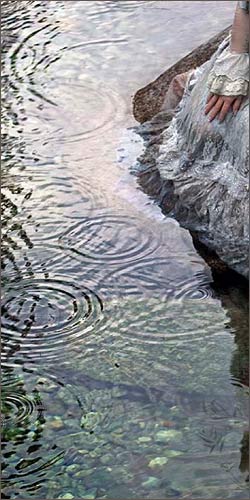
Amanda Lehmann: Vocals
Steve Hackett: Guitars
Phil Mulford: Bass
Roger King: Keyboards
Gary O’Toole: Drums
Steve Hackett about Ripples:
. This time I’ve chosen a female singer. Amanda Lehmann sings the song with beautiful vibrato like the young Marianne Faithful along with the poignant tone of the older Marianne. The electric guitar melody, which I created, I enjoyed really feeling my way back into and the guitar sound at the end was the product of three fuzz boxes hooked in series to create a distant string orchestra effect.”
HJ: Amanda Lehmann definitely has an interesting voice, and she is a good singer. It is, however, hard to get used to the way she sings Ripples. In my opinion Steve could have – should have made a better choice here. Or Amanda should have sung in a higher register, which she is able to (cf. Shadow Of The Hierophant). With this superb interpretation and arrangement and these vocals this song simply is not for me. Sorry.SG: It is not that this song was not fit for female singers, but the key seems not to be the right one for Amanda Lehmann. Or is it her Country & Western voice that does not really go with this song?
PM: Sorry, another weak moment where singing is concerned. Amanda Lehmann’s vocals are simply wrong here. A pity – the song has so much potential…
Unquiet Slumbers For The Sleepers …(2:12)
Steve Hackett: GuitarsRoger King: Keyboards
Gary O’Toole: Drums
Benedict Fenner: Additional Production
Steve Hackett about Unquiet Slumbers For The Sleepers:
. This started out life on the nylon guitar but Roger King added Mellotron mandolins plus repeat to swirl the whole effect around. The synth sounds more voice like on our version as it’s ghosted by vocal sample.”
HJ: I am looking forward to the instrumental pieces after these sobering moments … and I am not disappointed: a clear version without any ado.SG: see In That Quiet Earth
PM: I have loved this song for more than 30 years … This version makes me love it forever!
… In That Quiet Earth (4:47)
Steve Hackett: GuitarsNick Beggs: Bass
Roger King: Keyboards
Gary O’Toole: Drums
Rob Townsend: Soprano Sax
Steve Hackett about In That Quiet Earth:
. I used one guitar on this instead of three. It’s much clearer than the original. It’s unnerving on the backwards section with a real siren quality. The Fernandes sustainer guitar comes into its own on this version. Gary O’Toole’s drums sound deliberately aggressive and compressed on the slow powerful moments. Soprano sax replaces the synth for what I think of as the snake charmer phrases.”
HJ:Steve has frequently played this song throughout the years, so it is no surprise that this is a very accomplished Hackett interpretation. The sax parts near the end are interesting.SG:Quiet Earthhas been played extensively by Hackett. He usually left made up for the synthie solo part with lots of improvisation. Here he is at it again. Changes can be found in the solo part (usually played with ‘reverse’ guitar, but here with ‘forward’ guitar). In the synthie solo part the synthesizer is replaced partly by Hackett’s guitar, partly by Townsend’s soprano sax.
PM:see Unquiet Slumber For The Sleepers
Afterglow(4:09)
John Wetton: VocalsSteve Hackett: Guitars
Phil Mulford: Bass
Roger King: Keyboards
Gary O’Toole: Drums
Amanda Lehmann: Harmony Vocals
Steve Hackett about Afterglow:
. John Wetton seizes hold of this song and really lives the powerful romance of it, especially when he sings “And I would search everywhere…” On this version there are two Les Pauls and a Rickenbacker – a nod to George Harrison and the sound he developed with the Beatles. “
HJ:Here is John Wetton, a singer we know from the first volume of Genesis Revisited. He has a pleasant voice that works well for Afterglow. But why has Steve not been a bit more daring with some songs? Nick Kershaw would have sounded very fine here and John Wetton could have sung another song as well. This song is flawless, but it seems a bit flat towards the end, particularly when compared to the Genesis versions on Wind & Wuthering and particularly Seconds Out.SG:John Wetton (King Crimson, Asia), who has worked with Hackett several times, sings the lead vocals in an accomplished but unspectacular manner. The backing vocals sound like Hackett himself.
PM:Damn, this is hot! A brilliant John Wetton, fantastic Roger King at the keyboards … and these drums… I am wallowing in nostalgia!
A Tower Struck Down(4:45)
Steve Hackett: GuitarsDick Driver: Double Bass
Roger King: Keyboards
Rachel Ford: Cello
John Hackett: Flute
Christine Townsend: Violins
Steve Hackettabout A Tower Struck Down:
. With original input from Mike Rutherford, this is one of my Genesis Branches. Now played with more brutality than the original, this has a killer riff. Written by John Hackett and myself, we’ve returned to it with added fervour! Genesis was never quite this heavy…”
HJ:This instrumental giant begins quietly and builds slowly. It sounds a bit like an orchestra (cello and violin … or are those sampled strings?) and much fresher and cleaned-up than the 1975 version. A couple of surprising sound gimmicks do not disturb the overall impresseion. A terrific finale completes this fine reincarnation.SG: Steve seems to have more courage when he covers his own songs. The strings play the intro on their own, and a couple of interesting sound effects enhance the dramatic beginning of the instrumental. When the band comes in it becomes obvious that there is much more power than in the original: heavy-duty (programmed) drums and an unusually heavy intonation of the riff. A couple of new melody lines – a good revision of the original.
PM:Alfred Hitchcock sends his regards. This song is pure listening pleasure! Steve finally experiments a bit and shows how his own music can develop over the years. This does not sound dusty but full of beans and fun at work…
Camino Royale (6:19)
Steve Hackett: Guitars, VocalsAttila Egerhazi (Djabe): Guitar
Roger King: Keyboards
Nick Magnus: Keyboards; Atmospheres
Gary O’Toole: Drums
Szilard Banai (Djabe): Drums
Tamas Barabas (Djabe): Bass
Zoltan Kovacs (Djabe): Piano
Ferenc Kovacs (Djabe): Trumpet
Benedict Fenner: Additional Production
Steve Hackettabout Camino Royale:
. Another Genesis branch, this time inspired by a dream I had of Genesis performing in a surrealistic version of New Orleans. Hungarian fusion band Djabe take the middle solos… creating a whole new authentic jazz feel to the song. Great mute trumpet from Ferenc Kovács and piano from Zoltán Kovác.”
HJ:Camino Royale is one of Steve’s live classics. He sings it himself, as usual, with some sound manipulations – like it or not. I like it, and it is definitely honest and belongs into this song. The presence of band members of Djabe (a Hungarian band Steve befriended) shows in a freely improvised middle section with trumpet and piano. A good version!SG: The youngest track off Hackett’s 1983 album of the same name is mainly left as it is, but sounds much better by virtue of cleaner sounds and more inspired playing. The verses are decorated with some effects (courtesy of Nick Magnus) and saxophone cues. Steve leaves the impro part to his friends from Djabe who opt for a jazz approach with a trumpet and piano solo. Quite interesting.
PM: Just one note… It is high time that Spectral Mornings is also given a make-over in the studio … Camino Royale shows that it is possible. It is all a bit wild and confused, but done very well, particularly the experiment with the trumpet!
Shadow Of The Hierophant (10:45)
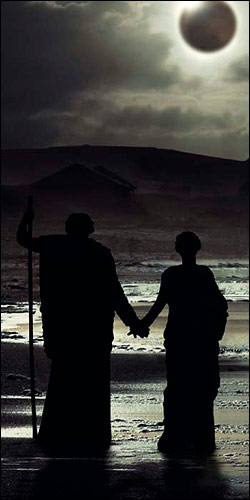
Amanda Lehmann: Vocals
Steve Hackett: Guitars
Steven Wilson: Guitar
Nick Beggs: Bass
Roger King: Keyboards
Gary O’Toole: Drums
Rob Townsend: Soprano Sax, Flute
Steve Hackettabout Shadow Of The Hierophant: “This was a co-write with Mike Rutherford, part of which was rehearsed by Genesis for the Foxtrot sessions. This version is a little faster than the original and partly in a lower key and this time we’ve used two twelve strings plus a keyboard twelve string, giving it the English Rose feel behind Amanda’s glorious vocal. The spirit of Genesis from a mere forty years ago is back, sounding fresher than ever, mellotrons scream, bass pedals thunder, and Gary’s drums sounding like his life depended on it. There’s a dead stop to give the piece an explosive finale.”
HJ:A brief intro and then the vocals… it seems incredible that this is the same singer as on Ripples, for Amanda Lehmann sings completely different and replaces Sally Oldfield, who sang this in 1975, very well. This is one of few moments on the album where vocals, interpretation and quality of the artists involved can hardly be outdone. Excellent: the brief, strong ending that replaced the original fade-out.SG: He has played it on his recent tour. Now we are treated to a new studio version of his classic he originally wrote with Mike Rutherford for the Foxtrot album. Amanda Lehmann is at the mike again, but this time her voice is wonderful. Though the cover remains close to the original, it is much fresher. Gary O’Toole’s drumming spices up the apocalyptic closing section which does, for once, not fade out, and is quite up with Collins’ drum play.
PM:Finally Amanda Lehmann is given the opportunity to use a voice in a song that suits here. Nothing to improve there… When I hear Steve’s guitar gently weep I could join in the crying. Nobody does it better! And the ending is bombastic!!
– Total playing time: 71:28
All in all
HJ:There can be no question about it – it was a good ideas of Steve’s to record further Genesis songs from the early years to 1977 and a handful of Hackett solo classics. The outcome is an album of cover songs of high quality almost every one of which is justified because they bring in a breath of fresh air into the old songs. Many Genesis and Hackett fans will be pleased by it, and most of all we have reason to look forward to the live shows with this repertoire, but … I could not say why, but this album is not the big coup for me. A couple of tracks, or parts of tracks, are absolutely fantastic. There are, however, many songs that are performed and played well, but just so well that I do not think they are bad. And there are moments on the album where I am probably going to skip to the next song, mostly because I cannot get used to the odd vocal part on the album … which is my main criticism. Apart from that there is little to moan about: Every now and then the guitars are too overpowering or improvising too much. That is alright, Steve is a guitarist, after all, so it is understandable. Drums and bass are occasionally too quiet or too subtle. Then there is the question of whether the songs should be done, as they are here, close to the original or whether the interpretation ought to take more liberties. Steve has decided to stick to the original, and that is a legitimate decision. When I pondered this question Nick d’Virgilio’s 2008 version of the Lamb album came into my mind. His versions had emancipated themselves much more from the original which made them very exciting. Perhaps Steve has kept back these liberties for the live shows – we will see.
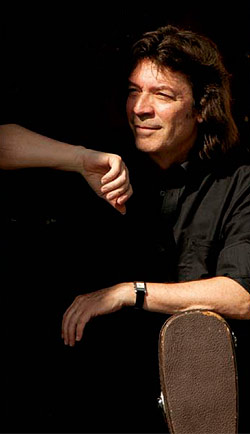
SG:This opus leaves more questions than it gives answers. Hackett obviously values what he has done with Genesis very highly – perhaps even more today than he did in the 70s. Perhaps this is the reason why he limits himself to copying the song identically out of reverence for the original. His 1996 album Genesis Revisited showed more courage and keenness to experiment. This may not always have worked well for some songs, but it does give the listener more reasons to play the album every now and then. Does Hackett shy away from the risk of alienating some fans with creative versions? Or would it have been too much work to fit into his tight schedule to create new arrangements? It is charming to see how meticulously the classics have been recreated for GR II but the originals have been released in good audio quality and every Hackett fan is certain to have them at home. So what is the purpose behind this release? Is is a portfolio for a putative reunion of the Genesis five-piece line-up, or is it Hackett’s plan B after the reunion that did not happen? Or is it a marketing tool devised to attract new, younger audiences with all the guests and the safe bet of „classic Genesis songs“? Yes, the songs are good, but Steve makes it hard for us to get used to new voices with these identical playback versions. It might be easier with creative cover versions.
PM:It is quite a risk to try and convey the music of Genesis to a new audience after some 40 years. The use of vocals for some songs may be the weak point, but Steve had his reasons for it … and the team that played on the album need not feel embarrassed about it at all. Your attitude to songs you have written decades ago does change … or they remain in as lively and agile a memory as this album creates!
An attempt at summing it all up
There is consensus about the highpoint. The Lamia is the big winner on the album and it is Nik Kershaw who comes out first with the reviewers. This vote also indicates how one could approach the album. There is obviously no way around the singers. They all have their qualities, but it shows that you cannot simply replace the voices of Peter Gabriel or Phil Collins. Nik Kershaw stands out on this album because he does not even try to emulate them and makes the songs his own instead. Simon Collins is also impressive, though, to be honest, some of that may be owing to the family bonus.
The other approach? Those who expect to enter a time machine and hear fresh versions of their beloved classics – will not be disappointed. There are few extended variations, the songs are usually performed close to the original version. Some may see in this a reverent way of dealing with the originals, and it is really done in a most excellent fashion – the sound of the album is brilliant. Others may find that the point of this retrospective is to discover new elements and different arrangements. This is what Steve has done on the first Genesis Revisited album and has not done here. Though he has hinted that that could well happen on his 2013 tour there is no version on Genesis Revisited II that compares to the courageous Firth Of Fifth on the first Revisited album.
The album cover:
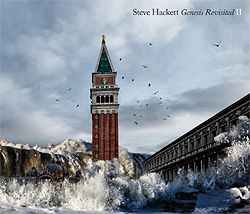
The album cover is an eyecatcher in its own right. The idea for it came from Angela and Maurizio Vicedomini who are also responsible for Genesis: In Our Flight Of Fancy. Let them tell us how they conceived of this idea: :
“One morning in Venice, around 9:30, we entered the Piazza S. Marco from the west with the gaps suggestive of side porches and the bell tower right in front of us. Looking down we realized that there was no living soul around us. Not a single person in the place or in the arcades. This initial moment persisted for almost ten long minutes after which we heard the first hurried steps moving behind our shoulders breaking the surreal silence. We took some photos that express only part of the feelings of those first minutes. A long pool of water on the pavement of the square gave the impression that there had been a flood and that with the water had dispersed the people away from the square. With this poignant thought and encouragement from Steve and Jo to search for something “dramatic and powerful” we developed the idea to create a scene that would justify the empty square.
The following weekend we left for Sylt in search of a wave that could fit in the context of Piazza S. Marco and play as experienced by our mind.”
Genesis Revisited II – further information
Produced by Steve Hackett and Roger King
Mixed and mastered by Roger King
Additional production: Benedict Fenner, Dave Kerzner, Chris Frenchie Smith, Alex Lyon
Special Effects by Charlie Dodd
Cover and photo artwork by Maurizio & Angela Vicedomini
Design by Harry Pearce
The album can be heard online from this Link!
The album can be ordered here:
2CD Mediabook: PLAY| amazon-uk | amazon.com
4LP+2CD: amazon-uk
Information compiled by Christian GerhardtsGeneral introduction and summary by Christian Gerhardts
Song-by-song analyses and overall evaluations by Helmut Janisch (HJ), Steffen Gerlach (SG) and Peter Maiwald (PM)
Photos and background story about the cover by Angela and Maurizo Vicedomini

